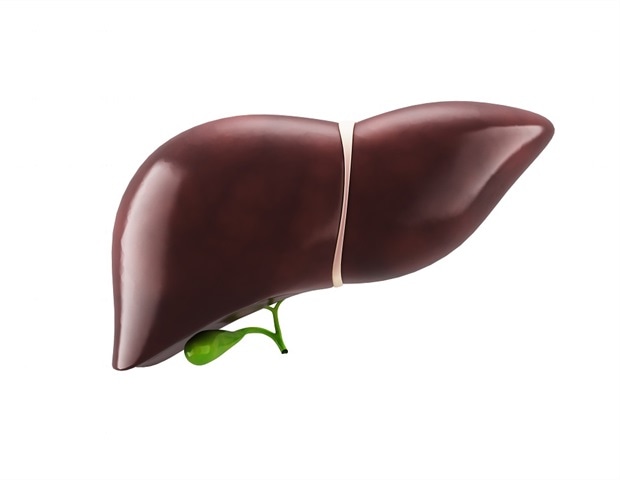Could Targeting the Adrenomedullin Pathway Be the Key to Treating Liver Failure?

The Role of Adrenomedullin in Liver Failure Syndromes
Liver failure syndromes, including acute liver failure (ALF) and acute-on-chronic liver failure (ACLF), present complex challenges in clinical management due to their dysregulated immune responses. Among the various factors implicated in this immune paralysis, adrenomedullin (ADM) has emerged as a significant player. This article aims to delve into the intricate relationship between ADM, adrenomedullin binding protein 1 (AMBP1), and immune responses in the context of liver failure syndromes. By exploring recent findings, we seek to illuminate the potential of ADM as a therapeutic target for restoring monocyte function and promoting recovery.
Understanding Liver Failure Syndromes
Liver failure syndromes encompass conditions where the liver's ability to perform its essential functions is severely impaired. This can occur in various forms, including ALF, ACLF, and decompensated cirrhosis. Each of these conditions presents unique challenges and is characterized by distinct pathological processes.
Acute Liver Failure (ALF)
ALF is a rapid deterioration of liver function, often occurring within days or weeks. Common causes include viral hepatitis, drug-induced liver injury, and metabolic disorders. The clinical presentation can range from mild jaundice to severe coagulopathy and hepatic encephalopathy, necessitating urgent medical intervention.
Acute-on-Chronic Liver Failure (ACLF)
ACLF occurs in patients with pre-existing chronic liver disease who experience an acute deterioration. This syndrome is often associated with infections, alcohol use, and other stressors that exacerbate the underlying liver dysfunction. The prognosis of ACLF is variable and depends on factors such as the severity of liver injury and concurrent organ failures.
Decompensated Cirrhosis
Decompensated cirrhosis represents the end stage of chronic liver disease, where the liver can no longer compensate for its loss of function. Patients may experience ascites, variceal bleeding, and hepatic encephalopathy, leading to a high risk of mortality.
Adrenomedullin: An Overview
Adrenomedullin (ADM) is a 52-amino acid peptide originally identified in human pheochromocytoma. It is known for its potent vasodilatory and immunomodulatory properties. ADM plays a crucial role in various physiological and pathological processes, including cardiovascular function, fluid balance, and the immune response.
Mechanisms of Action
ADM exerts its effects primarily through binding to specific receptors, leading to the activation of intracellular signaling pathways. Notably, it can influence the behavior of immune cells, including monocytes and macrophages, which are critical players in the liver's immune landscape.
Adrenomedullin Binding Protein 1 (AMBP1)
AMBP1 is a protein that binds to ADM, regulating its availability and activity in circulation. The balance between ADM and AMBP1 is vital for maintaining immune homeostasis. Disruption of this balance may contribute to pathological states, including liver failure syndromes.
The Study: Investigating ADM and AMBP1 in Liver Failure
This study aimed to elucidate the roles of ADM and AMBP1 in patients with ALF, ACLF, and decompensated cirrhosis. By comparing these patients with healthy controls, researchers sought to understand how the expression levels of these proteins correlate with disease severity and immune dysfunction.
Patient Cohorts
The study included a total of 54 patients with ALF, 25 with ACLF, and 9 with decompensated cirrhosis, alongside 16 healthy controls (HC). This diverse cohort allowed for comprehensive analysis across varying degrees of liver dysfunction.
Methodology
Peripheral blood mononuclear cells (PBMCs) and monocytes were isolated from participants for RNA sequencing and cell culture experiments. The concentrations of ADM and AMBP1 were measured using enzyme-linked immunosorbent assays (ELISA), providing insights into the systemic and cellular levels of these proteins.
Key Findings
The results of the study revealed significant differences in ADM and AMBP1 expression among the patient groups, shedding light on the pathogenic mechanisms underlying liver failure syndromes.
Increased ADM Expression
ADM expression was markedly increased in isolated monocytes from patients with ALF (log fold change = 5.88, p = 0.000216413) and ACLF (log fold change = 4.62, p = 0.00057122) compared to healthy controls. This suggests that elevated ADM levels may be a response to the severe inflammatory state present in liver failure.
Reduced AMBP1 Levels
Conversely, AMBP1 levels were significantly reduced in patients with ALF (59.27 ± 44 µg/mL) compared to those with ACLF (126.3 ± 72.23 µg/mL) and healthy controls (252.8 ± 159.7 µg/mL) (p < 0.0001, ALF vs HC). This reduction in AMBP1 could lead to increased bioavailability of ADM, potentially exacerbating the immune dysregulation seen in liver failure.
Plasma Concentrations
Plasma ADM concentrations were significantly higher in patients with ALF (1,684 ± 1,156 pg/mL) compared to those with ACLF (836.1 ± 765.2 pg/mL) and healthy controls (164.8 ± 62.73 pg/mL). This elevation further supports the hypothesis that ADM is involved in the pathophysiology of liver failure syndromes.
Response to LPS Stimulation
In vitro experiments demonstrated that treatment with lipopolysaccharide (LPS) increased ADM concentrations in PBMC supernatants. Specifically, in ALF patients, ADM levels rose from 259.2 ± 213.7 pg/mL to 561.4 ± 1,038 pg/mL, while in ACLF patients, levels increased from 1,757 ± 1,689 pg/mL to 3,202 ± 491.2 pg/mL. This finding indicates that inflammatory stimuli can further elevate ADM levels, potentially worsening immune dysregulation.
Monocyte Function and MerTK Expression
The study also explored monocyte function, particularly the expression of Mer tyrosine kinase (MerTK), which is associated with a pro-restorative, anti-inflammatory phenotype. It was observed that the percentage of CD14+ cells expressing MerTK was reduced after culture with LPS (2.077 ± 0.87%). However, co-culture with ADM at 100 nM restored the MerTK expression to 3.852 ± 1.063%, suggesting a potential therapeutic role for ADM in modulating monocyte behavior.
Clinical Implications and Future Directions
The findings of this study provide valuable insights into the role of ADM in liver failure syndromes. The increased expression of ADM and the reduction of AMBP1 indicate a potential imbalance that may contribute to the dysregulated immune response observed in these patients. Restoring this balance could be a novel therapeutic strategy aimed at improving outcomes in liver failure.
Potential Therapeutic Target
Given the influence of ADM on monocyte function and its ability to restore MerTK expression, targeting this pathway may offer a new approach to treat liver failure syndromes. Future research should focus on understanding the mechanisms by which ADM modulates immune responses and exploring the efficacy of ADM-based therapies.
Further Research Needs
While this study provides a foundational understanding of the roles of ADM and AMBP1, further studies are necessary to explore the therapeutic potential of modulating these proteins. Clinical trials evaluating ADM analogs or AMBP1 inhibitors may reveal new avenues for treating patients with acute and chronic liver failure.
Conclusion
In conclusion, the study demonstrates that ADM is significantly increased in acute liver failure syndromes, while AMBP1 is reduced, reflecting the severity of the disease. The effects of ADM on monocyte function suggest a complex interplay that may contribute to immune dysregulation. By focusing on how to modulate this pathway, we may pave the way for novel therapeutic strategies aimed at restoring monocyte function and improving patient outcomes.
FAQs
What is the role of adrenomedullin in liver failure?
Adrenomedullin (ADM) plays a crucial role as a potent vasodilator and immunoregulator. In liver failure, increased ADM levels may exacerbate immune dysregulation, impacting monocyte and macrophage function.
How does adrenomedullin affect monocyte function?
ADM has been shown to enhance the expression of Mer tyrosine kinase (MerTK) in monocytes, promoting a pro-restorative, anti-inflammatory phenotype, particularly after inflammatory stimuli like LPS.
What is the significance of adrenomedullin binding protein 1 (AMBP1) in liver failure?
AMBP1 regulates the availability of ADM in circulation. Reduced levels of AMBP1 in liver failure may lead to an increase in bioactive ADM, further contributing to immune dysregulation.
What are the future research directions regarding ADM in liver failure?
Future research should focus on understanding the mechanisms by which ADM modulates immune responses and exploring the therapeutic potential of ADM analogs or AMBP1 inhibitors in clinical settings.
The exploration of ADM's role in liver failure syndromes opens new avenues for potential therapeutic strategies. Could targeting the ADM pathway lead to improved treatment outcomes for patients with liver failure? #LiverHealth #Adrenomedullin #Immunology
Published: 2025-08-19 03:06:00 | Category: Uncategorized



